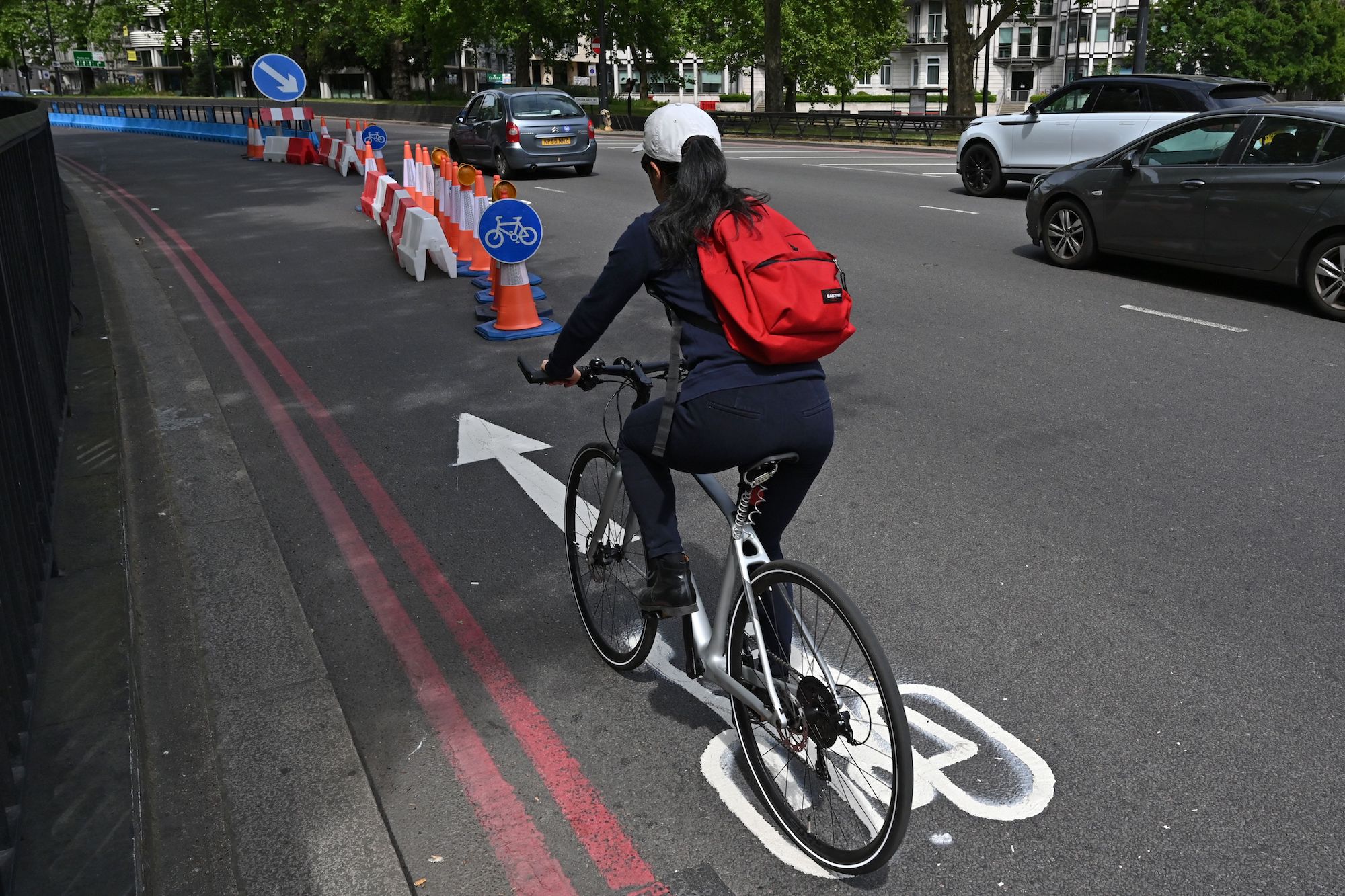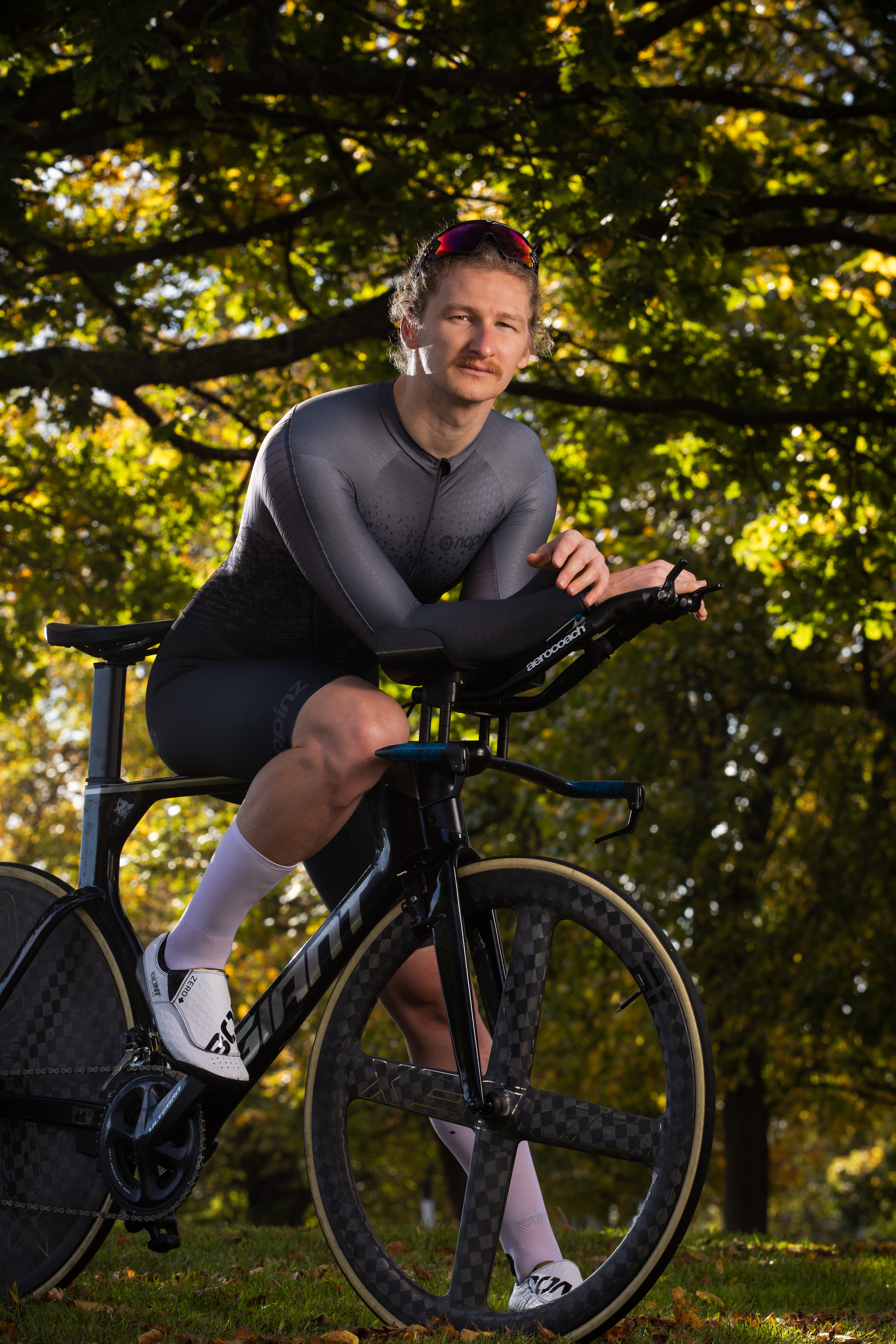What councils across the UK are doing to get more people on bikes during lockdown
As the nation looks to easing lockdown, how can cities and towns avoid an increase in traffic congestion?


Cyclists were given reason to be cautiously optimistic earlier this month when the government announced a major investment in two-wheeled transport as the country looks to easing lockdown.
People are being encouraged to return to work if they cannot work from home and some businesses are re-opening, as the UK has moved into the next phase of its coronavirus measures.
But the easing of lockdown has sparked concerns that the roads could be even more congested than before the pandemic, as those returning to work try to avoid public transport due to health concerns and trains and buses are still operating on reduced services.
In order to avoid a new traffic lockdown the government is encouraging people to jump on the bike for their commutes, which includes a £2 billion investment in pop-up bike lanes, wider pavements, safer junctions and traffic-free neighbourhoods.
The news will be welcome to new and old cyclists alike, but what are councils across the country doing to get more people on the bike in post-lockdown Britain?
London
In London, Mayor Sadiq Khan and cycling commissioner Will Norman have overseen a number of measures to benefit cyclists and walkers, including introducing the largest car-free zone in any capital city in the world.
Get The Leadout Newsletter
The latest race content, interviews, features, reviews and expert buying guides, direct to your inbox!
Streets between London Bridge, Shoreditch, Euston, Waterloo, Old Street and Holborn will be limited to buses, while pavements have been widened across the city, with pop-up cycle lanes also being introduced.
Plans have also been revealed for the Oval Triangle, near Oval cricket ground, to be converted to a low-traffic neighbourhood.
Khan said: “I ask that Londoners do not use public transport unless it is absolutely unavoidable – it must be a last resort. If you can work from home you should continue to do so. We should all spend more of our leisure time in our local areas too.”
“We will need many more Londoners to walk and cycle to make this work. That’s why these plans will transform parts of central London to create one of the largest car-free areas in any capital city in the world.”
Manchester
In Manchester, measures have already been taken to encourage people to cycle as Transport for Greater Manchester has invested £5 million in emergency funds for pop-up cycle lanes and temporary measures.
Deansgate, a main road through Manchester city centre has been pedestrianised to create a shared space for pedestrians and people on bikes between Blackfriars Street and King Street West.
More than a dozen footpath widening schemes will be carried out across the city.
Manchester’s cycling and walking commissioner Chris Boardman said: “By creating safe streets we give people the choice to make active journeys, taking the pressure off our public transport system and protecting our NHS - both now and in the future. When a third of all journeys under 1km in Greater Manchester are made by car, the lifesaving impact of this, through improved health and cleaner air, cannot be underestimated.
“Our Local Authorities are already mobilising their plans to create more space for those on foot or on bikes; a potential lifeline for the third of households across the city region who don’t have access to a car and usually rely on public transport.
“And whilst this funding will be a vital enabler, fast tracking the approval of side roads zebra crossings - that are currently used across the world- will help protect people who are choosing to do their bit to help us all.”
Bristol
The Mayor of Bristol Marvin Rees has announced cycling and walking upgrades in the centre of the city, including Marlborough Street, Park Row, Victoria Street, Lewins Mead, Stokes Croft and Clifton Triangle.
A number of the transport changes in Bristol were already planned before the lockdown, but the council has taken the opportunity to bring forward a number of plans to improve cycling and walking.
Rees said: “The current situation is challenging our usual travel habits and behaviour in a way that we’ve never seen before. Many of us have already embraced more walking and cycling journeys and, whilst it is understandable bus usage has dropped, we want to protect the long-term viability of our public transport services because of their intrinsic value to communities across the city.”
Cardiff
In the Welsh capital, the traffic lane next to Cardiff Castle on Castle Street has been removed so the pavement could be expanded for pedestrians and cyclists.
The measure was taken to allow people to walk and ride while still adhering to social distancing rules, after a similar scheme was put in place around Roath Park Lake.
Councillor Caro Wild, Cabinet Member for Strategic Planning and Transport said: "We have to ensure that any changes we make to roads and pavements are safe for all road users. Castle Street is the first road scheme in the city. It will be installed on Sunday and a similar scheme on Wood Street is currently being looked into.
"It's not possible for us to transform all public space in the city overnight, but we are doing all that we can, with the resources available, to bring in these social-distancing schemes as quickly as possible.
"With the significant increase in the number of people cycling and walking in the city, it is important, more than ever, for all users of public space to be respectful and mindful of others especially with vulnerable users."

Thank you for reading 20 articles this month* Join now for unlimited access
Enjoy your first month for just £1 / $1 / €1
*Read 5 free articles per month without a subscription

Join now for unlimited access
Try first month for just £1 / $1 / €1
Alex Ballinger is editor of BikeBiz magazine, the leading publication for the UK cycle industry, and is the former digital news editor for CyclingWeekly.com. After gaining experience in local newsrooms, national newspapers and in digital journalism, Alex found his calling in cycling, first as a reporter, then as news editor responsible for Cycling Weekly's online news output, and now as the editor of BikeBiz. Since pro cycling first captured his heart during the 2010 Tour de France (specifically the Contador-Schleck battle) Alex covered three Tours de France, multiple editions of the Tour of Britain, and the World Championships, while both writing and video presenting for Cycling Weekly. He also specialises in fitness writing, often throwing himself into the deep end to help readers improve their own power numbers. Away from the desk, Alex can be found racing time trials, riding BMX and mountain bikes, or exploring off-road on his gravel bike. He’s also an avid gamer, and can usually be found buried in an eclectic selection of books.
-
 Gear up for your best summer of riding – Balfe's Bikes has up to 54% off Bontrager shoes, helmets, lights and much more
Gear up for your best summer of riding – Balfe's Bikes has up to 54% off Bontrager shoes, helmets, lights and much moreSupported It's not just Bontrager, Balfe's has a huge selection of discounted kit from the best cycling brands including Trek, Specialized, Giant and Castelli all with big reductions
By Paul Brett
-
 7-Eleven returns to the peloton for one day only at Liège-Bastogne-Liège
7-Eleven returns to the peloton for one day only at Liège-Bastogne-LiègeUno-X Mobility to rebrand as 7-Eleven for Sunday's Monument to pay tribute to iconic American team from the 1980s
By Tom Thewlis